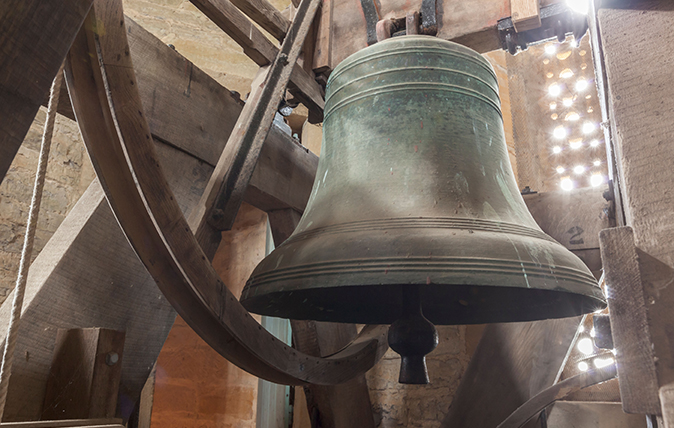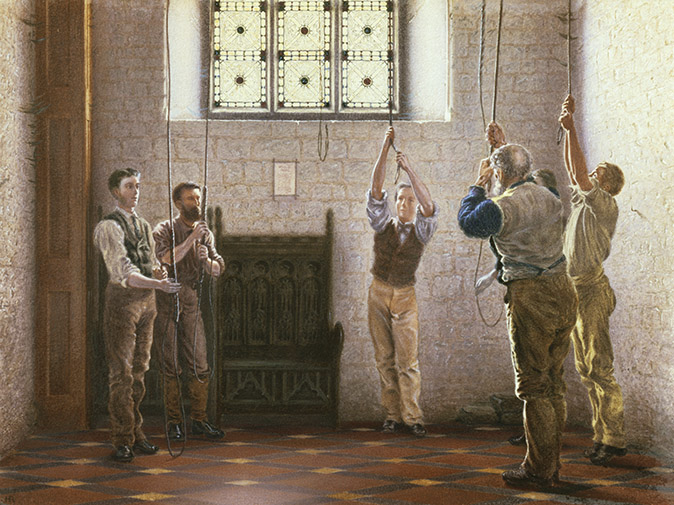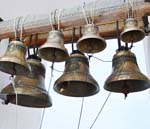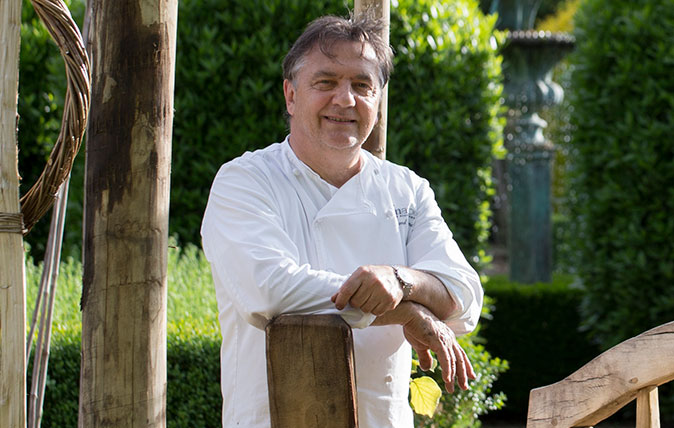Learning the ropes: The new breed of church bell ringers
Far from being the preserve of older devotees, church bell-ringing is increasingly popular with youngsters. Vicky Liddell meets the teenagers for whom the bell tolls.


Every Sunday, in about 5,000 bell towers up and down the country, assorted groups of people climb spiral staircases and assemble in circles at the end of candy-striped ‘sallies’. When they hear the words ‘look to, treble’s going, she’s gone’, they pull the ropes that sound the bells and a cascade of sound ripples out over the countryside.
Despite regular media reports of a national shortage of bell-ringers, the craft is still enjoyed by an estimated 40,000 enthusiasts, including young people, who all know their plain bob minors from their grandsire doubles.
The elegant twin-towered Wimborne Minster in Dorset has been especially successful in attracting younger ringers and, every Tuesday evening, several teenagers ascend the 72 twisting stairs for the weekly practice session. Jack Pease, now 18, has been ringing since he was five years old – ‘I had to stand on a table to start’ – and Katie Child, also 18 and studying for A levels, is a third-generation bell-ringer whose parents ring for the Minster, too.
'I was overwhelmed by the physics and the fact that I could move the equivalent weight of an old- fashioned VW Beetle on the end of a rope.’
Admitting that some of her friends are rather curious about her hobby, ‘especially when I took a boat to Brownsea Island just to ring bells’, Katie is hoping to go to Oxford University, where the opportunities for bell-ringing are some of the best.
Conversely, 19-year-old Max Wright, assistant steeple keeper at the church, only started ringing last year. ‘I’m quite musical anyway, which has helped. Apart from breaking a stay four months in, it’s going well,’ he says with a smile.
‘Thirteen is the best age to start – before that, children don’t have the strength to control the bells,’ explains David Warwick. Every Wednesday afternoon, he and some of the other ringers run an after-school class for a group of Year 9 and 10 music pupils from Queen Elizabeth’s School, Wimborne.
Starting with just the highest, ‘lighter’ eight bells, the class has progressed from a period of silenced bells at the beginning of the year, where the sound is replicated on a computer, to Plain Hunt, its first basic change-ring method.
Sign up for the Country Life Newsletter
Exquisite houses, the beauty of Nature, and how to get the most from your life, straight to your inbox.
‘It’s good to do something different with no exam at the end of it,’ points out Martha Tribe, one of the pupils.
Fellow student Derry Sowinski agrees: ‘I’m getting the hang of it now and find it quite therapeutic.’ To start with, even tying the ends of the ropes can be challenging, but ‘once you’ve learnt, it’s like doing your shoelaces,’ notes Olivia Sharpe.
In the Midlands, 23-year-old Hollie Davison has been ringing bells since she was 12. ‘I started on a whim, after attending a tower open day,’ she explains. ‘It felt like something really different – I was overwhelmed by the physics and the fact that I could move the equivalent weight of an old- fashioned VW Beetle on the end of a rope.’

Hollie’s home tower is the Grade I-listed St Peter & St Paul at Syston, Leicestershire, but she’s visited many other towers, including St Mary’s at Humberstone, which is accessed via a ladder and a trapdoor. She regularly rings at weddings, at which a special Midlands tradition of ‘firing’ the bells – when they’re all sounded at the same time – is practised. At funerals, the lone tenor bell tolls – it dates from the 1600s and Hollie describes it as ‘one of the most heartbreaking sounds’.
Change-ringing is an ancient tradition that’s woven deeply into the fabric of English history. First developed after the Reformation, when churches began to rehang bells using a mechanism that allowed them to rotate full circle for the first time, the first recorded peal rang out in 1715, at St Peter Mancroft in Norwich.
Ringing was thirsty work, with income often rapidly transferred from the tower to the village inn. Some towers even had a special jug (a gotch) to sustain them. By the 18th century, bell-ringers had developed a reputation as drunken layabouts, but the Victorians soon improved standards and appointed tower captains, who were responsible for attendance and good behaviour.
Although the gotch has disappeared, bell-ringing is still a social activity, with many practice sessions culminating in a convivial trip to the pub. ‘Bell-ringers are the friendliest people,’ declares Hollie. ‘When I went to university, the people I met in the Bellringing Society became some of my closest friends. Every summer, groups set out round the country to visit other towers and all the ringers that I meet say it’s like being part of a second family.’
For Katie Flavell, from the Central Council of Church Bell Ringers, it was the beginning of a fine romance – she met her husband in a bell tower in Croydon. A couple from the Wimborne group, Alan and Kathy Bentley, got together when Kathy was literally whisked off her feet by a bell rope, only to be caught on her journey back down by her future husband. ‘I was quite a good cricketer at the time,’ he recalls.
Belfry mishaps like this usually occur when an over-enthusiastic ringer pulls too hard and, fortunately, the sight of hapless ringers being hoisted skyward while still clinging to a rope are mostly the stuff of comedy sketches. ‘Timing is of the essence,’ adds Katie. ‘It’s more about technique than strength and you never stop learning.’
Ring the changes
- Towers hung for ringing must have a minimum of four bells—some have 12 or more. The highest pitched is a treble and the lowest is a tenor
- When Handel moved to London, he called England ‘the ringing isle’ because he heard the sound of bells wherever he went
- During the Second World War, all church bells were silenced, with strict orders for them only to be rung in the event of an invasion by enemy troops
- Individual ringing combinations are often named after the place in which they were invented, combined with the number of bells used, leading to eccentric names such as Cambridge Surprise Major, Avon Delight Maximus or Oxford Bob Triples
- Muffled ringing, in which leather muffles are fitted to the clappers, is used for sombre occasions such as Remembrance Sunday
Ringing Remembers is a campaign aiming to recruit 1,400 new bell-ringers to commemorate the 1,400 ringers who died during the First World War (www.bigideascompany.org/project/ringingremembers)

How to begin bellringing
How to get started bellringing, what to read, what to buy, and the best courses to take to learn this

Raymond Blanc's perfect picnic: 'I'm a Frenchman through and through'
This picnic is ideal for Royal Ascot.

Credit: Leena Robinson / Alamy
How to grow your own peaches: Five steps to peachy perfection
Steven Desmond explains how you can produce these delicious, luxurious fruits on your own soil.
Country Life is unlike any other magazine: the only glossy weekly on the newsstand and the only magazine that has been guest-edited by HRH The King not once, but twice. It is a celebration of modern rural life and all its diverse joys and pleasures — that was first published in Queen Victoria's Diamond Jubilee year. Our eclectic mixture of witty and informative content — from the most up-to-date property news and commentary and a coveted glimpse inside some of the UK's best houses and gardens, to gardening, the arts and interior design, written by experts in their field — still cannot be found in print or online, anywhere else.
-
 Designer's Room: A solid oak French kitchen that's been cleverly engineered to last
Designer's Room: A solid oak French kitchen that's been cleverly engineered to lastKitchen and joinery specialist Artichoke had several clever tricks to deal with the fact that natural wood expands and contracts.
By Amelia Thorpe
-
 Chocolate eggs, bunnies and the Resurrection: Country Life Quiz of the Day, April 18, 2025
Chocolate eggs, bunnies and the Resurrection: Country Life Quiz of the Day, April 18, 2025Friday's quiz is an Easter special.
By James Fisher
